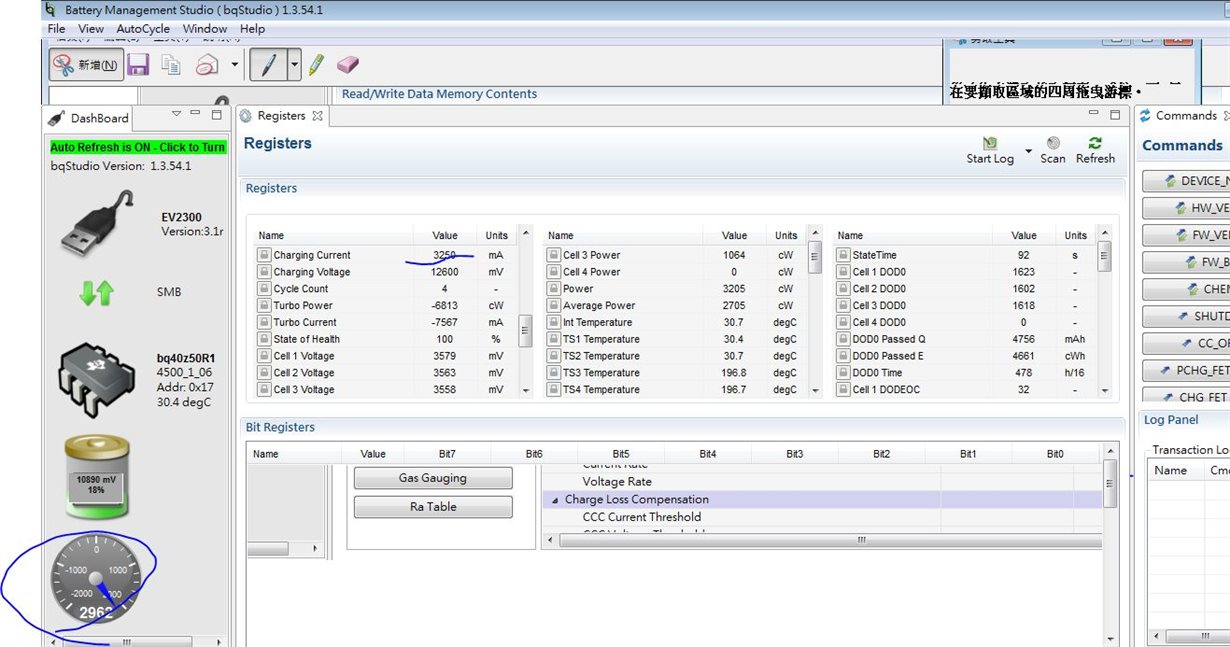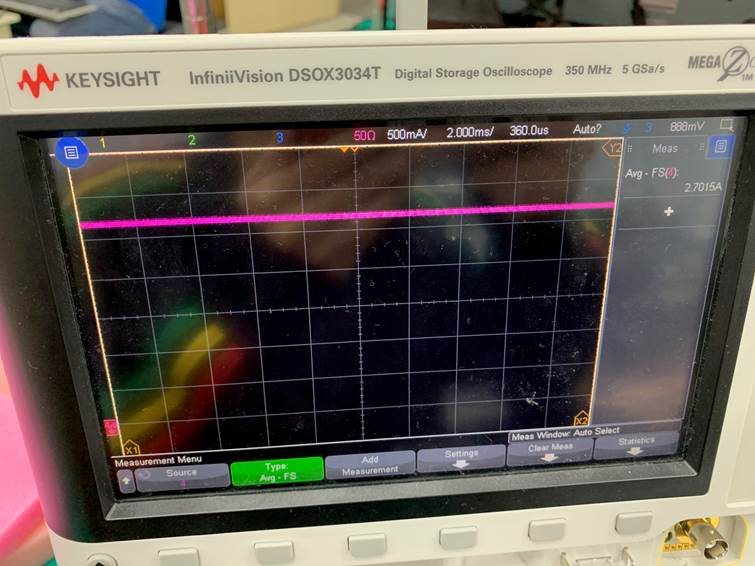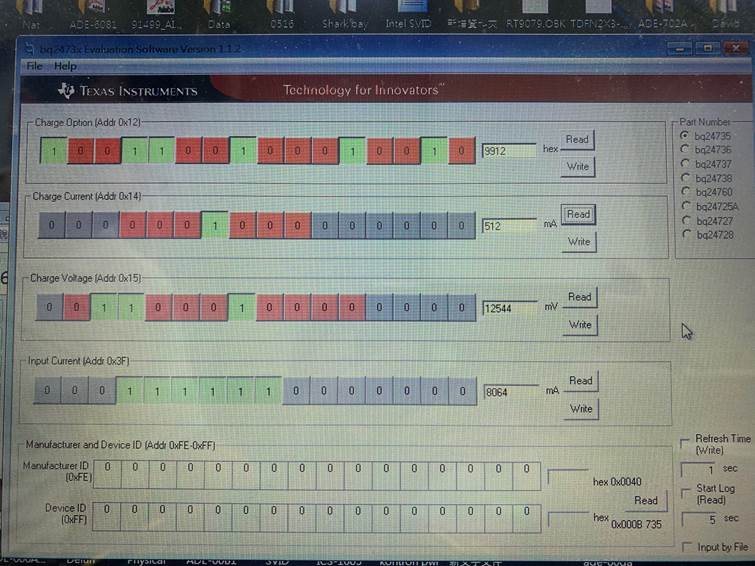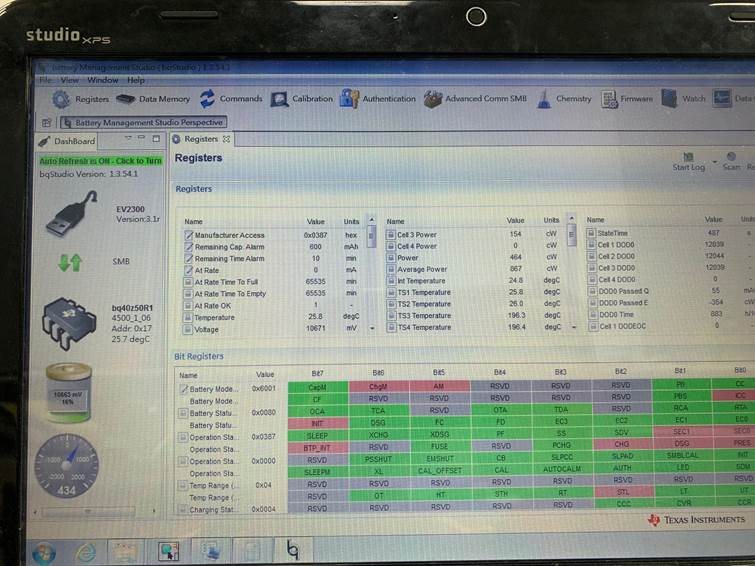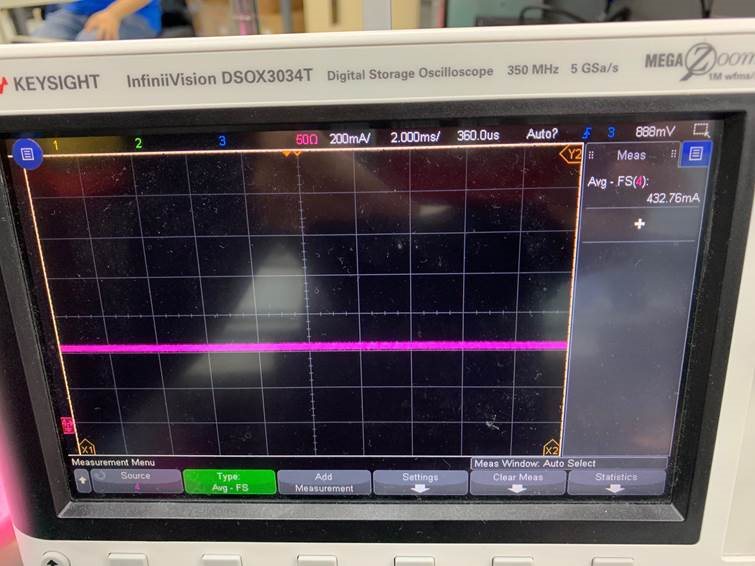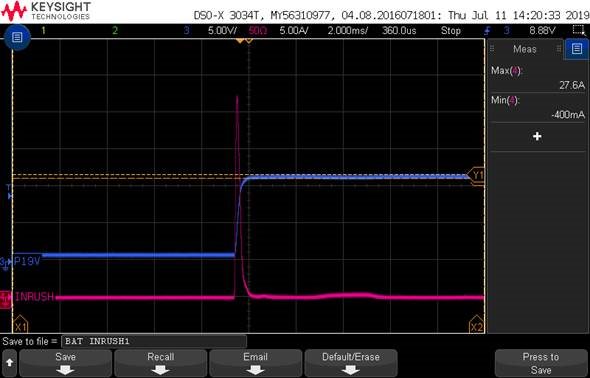Other Parts Discussed in Thread: EV2400, BQ40Z50-R1
Dear Sir,
Our customer have dsign in BQ24725A and current they are setting the chagring current to 3250mA show as below. However, when RD measure the actually charging current , they only measure the max current 2.6A . Coudl you kinldy hlep us check why there is difference between the set currnet and actual current? . Also, the battery pack they are currenty use is using TI guage BQ40Z50R1 and we attach BQ24725A schematic as well.
Abvoe, please kinldy help us and if thre is any quesiton, please feel free to let me know
Alec


